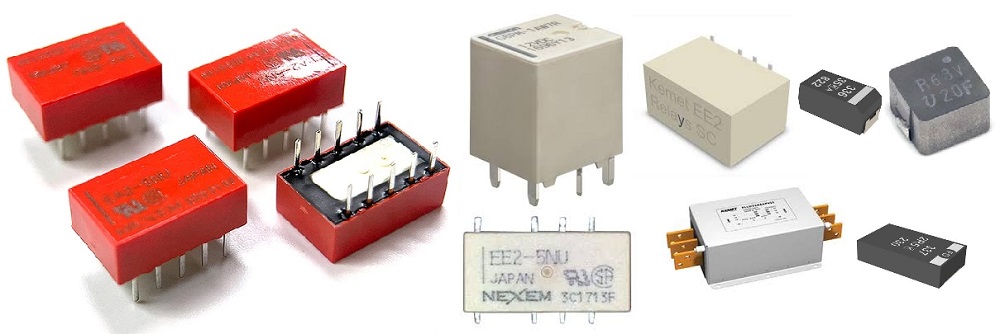Electromechanical >
Relays, Contactors & Solenoids >
Yageo Relays
YAGEO / KEMET Relays
Quick Overview
Yageo Relays
YAGEO KEMET relays are devices that make or break electrical circuits through their output section, which is driven by an operational signal triggered by an electric input signal controlled by switching devices.

Details
YAGEO KEMET’s low signal relays are highly sensitive switches designed to handle low-level electrical signals with utmost precision and minimal signal distortion. These relays are capable of switching and controlling low-power signals, typically in the range of millivolts to a few volts. They are commonly used in applications requiring precise signal routing, such as telecommunications, audio equipment, instrumentation, measurement devices, and control systems. Low signal relays ensure accurate signal transmission, low contact resistance, and minimal signal noise to maintain the integrity and quality of the low-level electrical signals they handle.
YAGEO KEMET offers latching and non-latching signal relays, which can be activated from 3 VDC to 24 VDC at 140 mW or less while carrying up to 30 W or 37.5 VA of power for both DC and AC applications. These relays are available in both through-hole and surface-mount options, making them useful for toggling power to a component or device.
The KEMET EC2/EE2 miniature signal relays feature a compact case size in a slim package, consuming minimal board space with either a through-hole or surface-mount configuration. These relays are recognized by UL and CSA and comply with Part 68 of the FCC’s 1,500 V surge capacity standards.
The KEMET EA2/EB2 miniature signal relays offer a compact case size in a flat package, also consuming minimal board space with through-hole or surface-mount configurations. Like the EC2/EE2 series, these relays are recognized by UL and CSA and comply with Part 68 of the FCC’s 1,500 V surge capacity standards.
Signal relays have internal moving parts, or contacts, that shift between open and closed positions due to a magnetic force generated by a control current running through a coil near the contacts. This magnetic field moves an armature, which in turn causes contact closure and allows electrical flow. This mechanism enables a relatively small signal to control a larger one. A signal relay consists of a coil that is secondary molded, providing high insulation performance between the coil and the contact.
Signal relays primarily feature a c-contact structure designed to switch current. They are compatible with reflow mounting and surface-mount devices. YAGEO/KEMET signal relays, typically used for load switching under 2A, offer excellent contact reliability even for small signal loads due to their gold-plated contacts and bifurcated crossbar structures. These relays are commonly used in industrial devices such as machine tools, molding machines, welding machines, mounters, security devices, gaming machines, and testing and measuring devices.
Relays are electrically-operated switches that regulate power to downstream circuits when energized, controlling low-current equipment, devices, machinery, and electrical systems. General-purpose and power relays use input signals and low voltages to control larger circuits. Time-delay relays open and close their contacts at preset times. Monitoring relays detect changes in operational or environmental conditions and protect downstream equipment from damage. Safety relays monitor operational and environmental conditions and disrupt power to protect workers. Solid-state relays have no moving parts and provide long service lives. Alternating relays toggle between loads to sequence load matching and distribute equal run times. Automotive relays regulate the flow of power through circuits to control vehicle components. Relay sockets mount on surfaces to interface relays with electrical connections.
